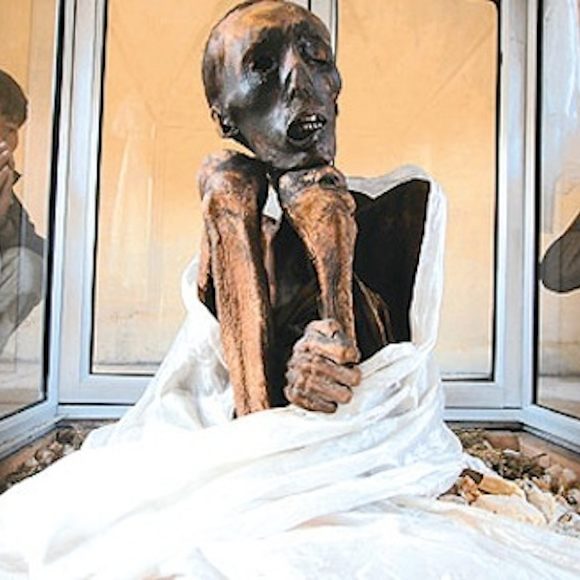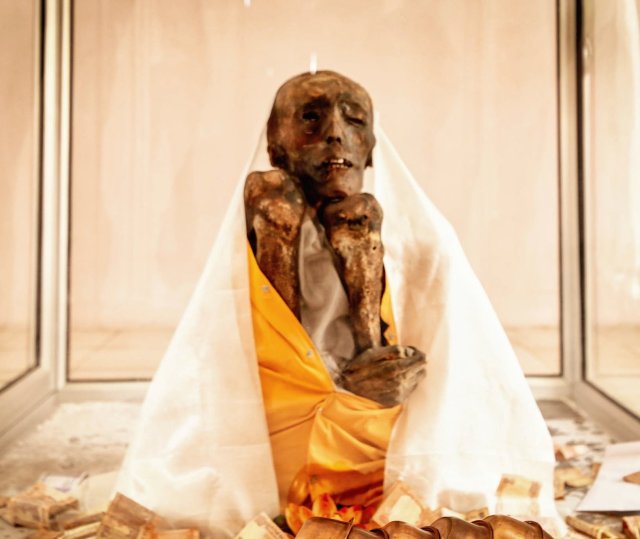Lama Sangha Tenzin, a Buddhist monk believed to have died in the 1500s, is renowned for his naturally mummified remains discovered in 1975 in Gue, a small village in the Spiti Valley of Himachal Pradesh, India. His tomb is located near the Line of Actual Control (LOC) in the Spiti Valley, and his body is the only known naturally mummified (self-mummified) Buddhist monk in India.
In 1975, an earthquake in northern India revealed an ancient tomb containing the mummified body of the monk Sangha Tenzin. This significant discovery was later excavated in 2004 by local police, who removed the remarkably well-preserved mummy. The mummy retains its skin and hair and remains in a seated position with a rope around the neck and thighs, a practice noted in some esoteric Buddhist texts.
Local legends add a mystical dimension to Sangha Tenzin’s mummification. It is said that during a severe scorpion infestation in the town, Sangha Tenzin requested his followers to mummify him. Upon his death, marked by the departure of his spirit, a rainbow appeared in the sky, and the scorpions vanished. This legend underscores the spiritual reverence associated with his remains.

The town where this discovery was made is situated approximately 30 miles from the Tabo Monastery, which dates back to 996 CE. The close proximity to such an ancient and significant religious site adds to the historical and cultural importance of Sangha Tenzin’s mummy. The well-preserved state of his remains, coupled with the intriguing local lore, continues to draw interest from researchers and visitors alike, offering a unique glimpse into the spiritual practices and beliefs of the region.


